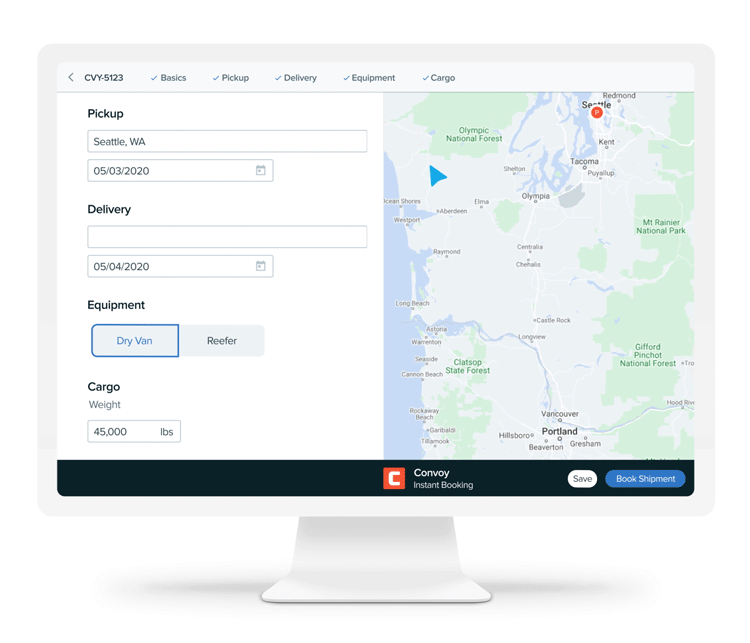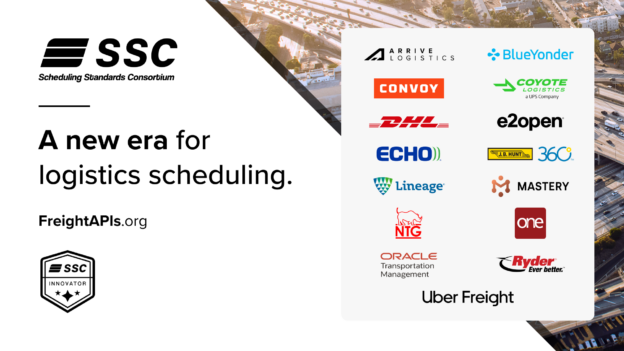What drives spot freight rates?
Industry Insights, Shippers • Published on May 15, 2020
The load boards that make up the “spot market” connect shippers with carriers to exchange full truck load freight services. Although swings in spot freight rates tend to grab logistics industry headlines, spot makes up only about 1/5th of the US trucking market according to FreightWaves.
Shippers often build a transportation management strategy that includes a primary contract carrier for guaranteed freight coverage and an extensive routing guide of backup carriers to reduce their exposure to spot market volatility. However, they still rely on spot for a number of reasons: contract carriers fall through, demand is high and unplanned loads need to be shipped, or the market is soft and spot markets are attractive. In addition, some shippers may not work through contracts, but still need their freight moved regularly.
Regardless of your reason for tendering spot loads, understanding the forces that drive spot freight rates is useful knowledge for any shipper. This guide dives into:
- Market forces behind spot rates
- How truckload characteristics influence prices
- Timing the spot market
- Technology to increase spot freight efficiency
Market forces behind spot rates
The spot market is influenced by broader macroeconomic conditions. A tight market (higher demand, limited supply) will lead to higher prices than a soft market (lower demand, higher supply).

You may have heard of the load-to-truck ratio. This figure takes the number of loads on the market and divides it by the number of trucks available to carry those loads. A higher number indicates high demand (more loads than trucks to carry them), and a lower number indicates high capacity (more trucks than loads). Different load boards track these numbers, acting as an indicator for the trucking market as a whole to determine whether we’re in a tight or soft market.
Sometimes market conditions are predictable. We can expect with some confidence that prices will rise when shipper demand is high (e.g. produce seasons and holiday seasons) and carrier supply is low (e.g. DOT week).
However, the spot market is prone to unexpected swings in different directions. This volatility stems from the short time frames in which shippers require demand from whatever available carrier supply currently exists. Notwithstanding, freight RFPs are also volatile processes.
We saw soft demand through much of 2019, even though the broader stock market experienced growth. We saw a massive spike in demand and a tight market in mid-March of 2020, during which the stock market experienced historic losses. Just as quickly, we saw drops in demand in April with spot rates and volumes dropping dramatically. Loads priced close to $1000 in March were going for a few hundred in April.
These external market forces dictate price in a way that’s beyond the control of any individual shipper. Let’s shift our attention to areas shippers have more agency over: what you ship and when you ship it.
Truckload characteristics influence spot prices
Shippers should also consider how the unique characteristics of each load, including the type of commodity, truck type, time frame, and lane, will impact spot prices.

It should come as no surprise that the type of commodities being shipped impacts shipping costs. Lower-value goods like paper, packaging, and grains will be less costly to ship than higher-value assets like electronics and industrial machinery. The weight of the load being tendered will also impact prices: heavier cargo is more costly. Longer distances and more urgent delivery time windows can also drive up the price paid to the carrier.
The lanes and destinations for freight loads play a significant role in pricing – namely, whether you’re transporting a truckload to a headhaul or backhaul market. If you’re shipping to a headhaul market, you should expect lower prices as carriers should have plenty of choices to pick up another load after they deliver your cargo. However, if you’re delivering to a backhaul destination, you can expect to pay higher prices. Carriers will have fewer options to pick up cargo and may need to drive empty to pick up their next load. This is why shippers may benefit from a digital freight network that offers automated reloads. This service batches multiple loads together, reducing empty miles driven by carriers.
Timing the spot market
Despite what its name implies, a load tendered on the spot market does not necessarily mean a decision is made “on the spot.” Loads don’t always require short notice and urgent deliverables.

Pricing of the spot market follows similar principles to booking a hotel room. Usually the longer in advance you book, the less you pay for your reservation. The same generally holds true for the spot market. However, last-minute price drops are possible. Just as hotel managers will reduce room prices to maximize occupancy, carriers and owner-operators may drop rates to win truckloads and reduce downtime.
However, hoping for a last-minute price drop is not an advisable transportation management strategy. You could end up paying much more for your preferred carrier, or wind up settling for a carrier who doesn’t fit quality and compliance criteria. To extend the hotel analogy: you don’t want to overpay for your hotel of choice, or worse — get stuck at a seedy motel on the wrong side of town. Tendering your load earlier will give you more time to practice carrier compliance management.
Technology to increase spot freight efficiency
When demand spiked in March 2020 due to the COVID-19 crisis, shippers posted loads to the spot market in high volumes. Those who partnered with digital freight networks were able to source capacity were able to source capacity more efficiently and reliably. According to Gartner, “Digital freight networks can help companies that are looking for real-time available capacity or looking to reduce transportation costs during the current crisis, as well as during future challenging times.”

Convoy’s digital freight network provides instantly bookable, guaranteed freight shipping rates. This saves shippers precious time, giving them back the hours they’d typically spend sourcing bids and waiting for carriers to accept a tender. Convoy also gives shippers valuable insights with transparent visibility into their spot shipments. This capability is provided through Convoy’s online shipper platform, or through an integration with leading transportation management systems (TMS) and partnerships with supply chain visibility solutions like FourKites, Project44, Macropoint, and 10-4. Spot shipments can be a great opportunity to pilot a new carrier prior to working on a contract basis.
If you’re interested in learning more about digital freight networks, get in touch with Convoy today.
More resources on how digital freight networks can help shippers:
- Build a durable supply chain for today’s environment and prepare for future volatility: 6 ways a digital freight network can help shippers during COVID-19
- Whether you’re selecting a freight partner or starting an RFP process, consult our guide to developing a freight transportation strategy.
- If you’re interested in learning more about digital freight networks, now is the best time to get started. Sign Up with Convoy today.
Convoy shipper platform is now part of Convoy’s integrated online platform for shippers. For more information, take a look at our freight booking app.



